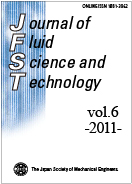Volume 6, Issue 2
Displaying 1-14 of 14 articles from this issue
- |<
- <
- 1
- >
- >|
Papers
-
2011Volume 6Issue 2 Pages 114-127
Published: 2011
Released on J-STAGE: February 14, 2011
Download PDF (1680K) -
2011Volume 6Issue 2 Pages 128-138
Published: 2011
Released on J-STAGE: February 14, 2011
Download PDF (1734K) -
2011Volume 6Issue 2 Pages 139-153
Published: 2011
Released on J-STAGE: February 14, 2011
Download PDF (5800K) -
2011Volume 6Issue 2 Pages 154-168
Published: 2011
Released on J-STAGE: February 16, 2011
Download PDF (655K) -
2011Volume 6Issue 2 Pages 169-176
Published: 2011
Released on J-STAGE: February 25, 2011
Download PDF (653K) -
2011Volume 6Issue 2 Pages 177-191
Published: 2011
Released on J-STAGE: February 25, 2011
Download PDF (580K) -
2011Volume 6Issue 2 Pages 192-201
Published: 2011
Released on J-STAGE: March 03, 2011
Download PDF (475K) -
2011Volume 6Issue 2 Pages 202-214
Published: 2011
Released on J-STAGE: March 09, 2011
Download PDF (1132K) -
2011Volume 6Issue 2 Pages 215-229
Published: 2011
Released on J-STAGE: March 17, 2011
Download PDF (2187K) -
2011Volume 6Issue 2 Pages 230-241
Published: 2011
Released on J-STAGE: March 23, 2011
Download PDF (1837K) -
2011Volume 6Issue 2 Pages 242-251
Published: 2011
Released on J-STAGE: April 06, 2011
Download PDF (587K) -
2011Volume 6Issue 2 Pages 252-263
Published: 2011
Released on J-STAGE: April 07, 2011
Download PDF (1398K) -
2011Volume 6Issue 2 Pages 264-278
Published: 2011
Released on J-STAGE: April 07, 2011
Download PDF (545K) -
2011Volume 6Issue 2 Pages 279-290
Published: 2011
Released on J-STAGE: April 15, 2011
Download PDF (326K)
- |<
- <
- 1
- >
- >|
